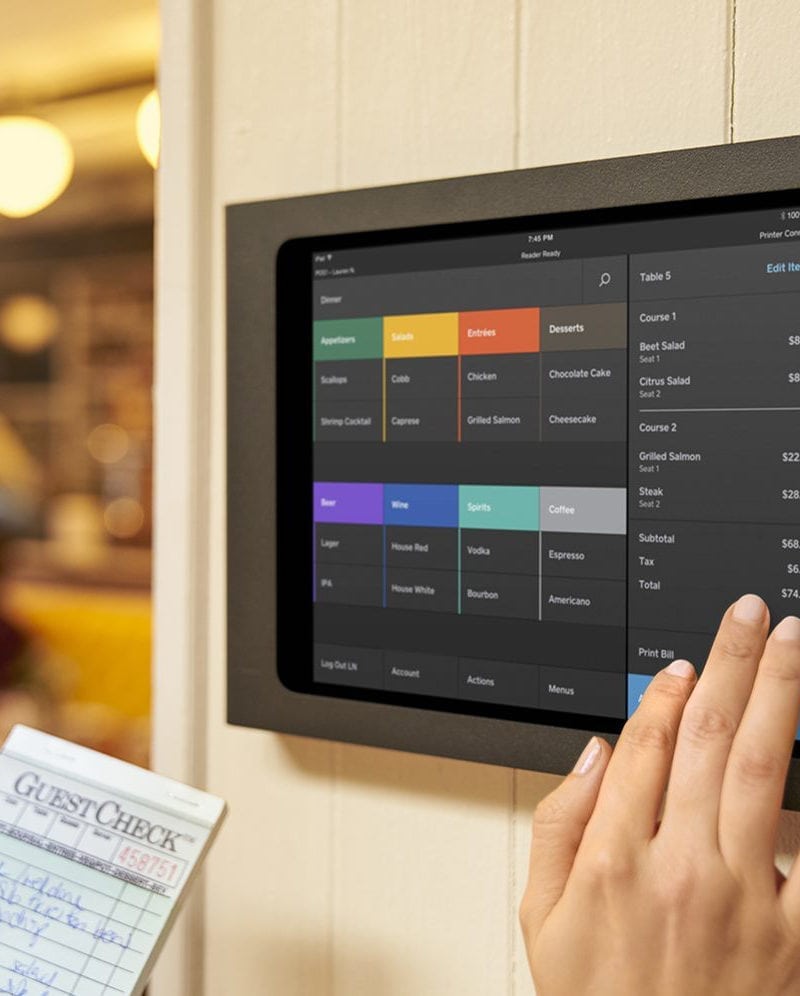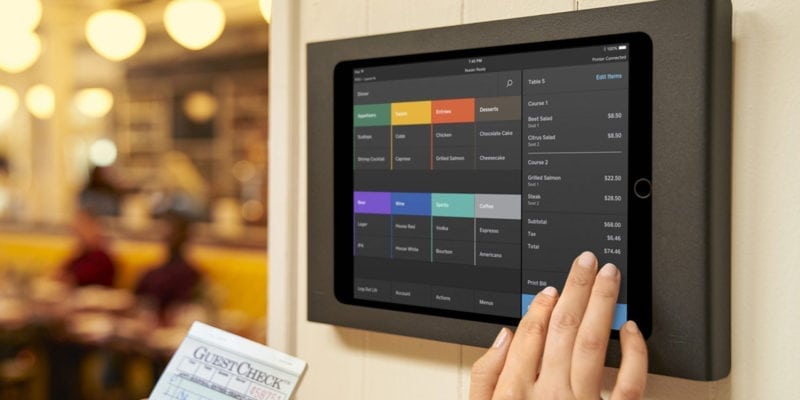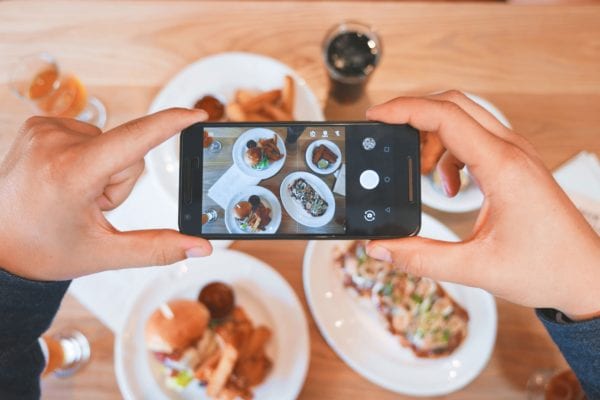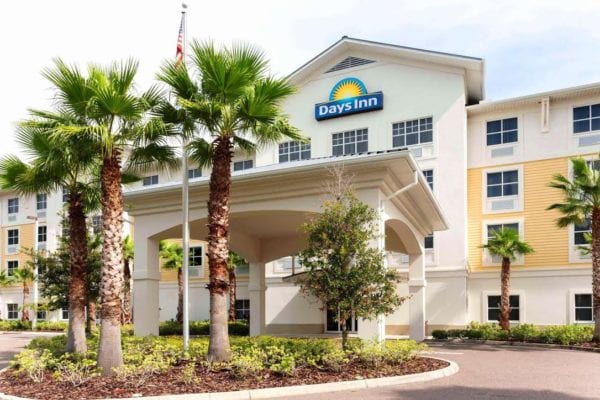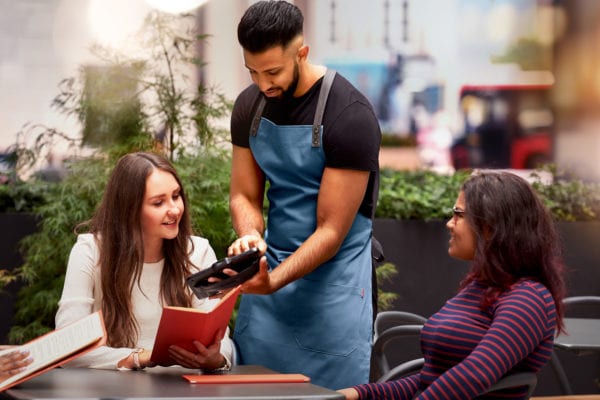Skift Take
Alyssa Henry's ace leadership is one of the unsung reasons why Square's engineers have effectively delivered intuitive payments software to many restaurants.
— Sean O'Neill
The first Skift Restaurants Forum will be held on Monday, September 24 in New York City. Join us, our stellar lineup of speakers, and 250+ industry professionals to discuss the future of the industry.
It’s hip to be skeptical. And many of us were precisely that about Square, a point-of-sale tech vendor, when it debuted in 2009. Sure, we thought the company’s white and lightweight devices for accepting consumer debit and credit card payments were strangely adorable. But we wondered: Could the startup gain traction in the face of the established giants of the payments industry?
Now it’s hip to be Square. The secret has been the company’s software that runs behind the scenes. The software has won over many merchants, including restaurant owners and operators, for its versatility and relatively low cost.
Alyssa Henry, who was hired away from Amazon Web Services to head up San Francisco-based company’s engineering operations in 2014, deserves a fair share of credit for leading that software development.
Today, Henry is seller lead at Square — a modest-sounding job title that doesn’t do justice to her C-suite-level role. Henry has driven Square to develop software that will give restaurants of all sizes access to the same insights to grow as the giants of commerce have.
In May, the company took the next step toward fulfilling that vision by unveiling Square for Restaurants — a full-service suite that is better suited for full-service restaurants. In August, the company’s hardware began to support custom points of sale.
Henry will join us on September 24 in New York to discuss operational insights from the Square ecosystem and its potential for restaurants.
As a preview, we had a brief chat with her that indirectly touched on some of the points raised in an opinion piece in late August on Eater New York. Veteran New York restaurant critic Robert Sietsema claimed that “Square Is the Most Annoying Thing to Happen to NYC Dining in Years.” Sietsema blamed Square for accelerating the trend in cashless restaurants, letting businesses send too many emails, and diminishing menu creativity. Unsurprisingly, Henry didn’t see things that way.
Skift Table: One of the Megatrends we’ve been watching in 2018 is that many restaurants are going cashless. What’s your take?
Alyssa Henry: Cash is expensive and painful and slow to manage. From what we hear from sellers that go cashless is that it helps simplify operations and lets them focus on their hospitality offering.
Skift Table: As you know, some people don’t have access to credit cards.
Henry: Our goal is to help sellers welcome everyone possible as a customer. We help them make the sale by accepting all types of payments. Gift cards you buy at a store are one form of payment that can be used as a workaround when a restaurant opts to go cashless.
Skift Table: Square enables a merchant to collect an email address to send a receipt electronically. Then it lets other restaurants also use that email address to contact customers. Why?
Henry: When you request a digital receipt, we’ll use that to send a digital receipt for any other seller you shop at. The other sellers don’t actually have access. We send the receipts on their behalf.
Many quick-serve restaurants don’t have access to a way to collect email addresses from customers to help create relationships. We let restaurants leverage the Square network and our Square marketing product to reach out to customers who have frequented their location without having to collect the email information themselves.
The feedback we get is that it’s a convenience for consumers not to have to keep entering their email addresses.
Skift Table: But some customers want these emails to stop. What can they do?
Henry: If you go to the bottom of the receipt, there is a link you can click to have your email address removed to be unsubscribed from future messages.
Skift Table: Many of us have visited counter-service cafes and quick-service restaurants where the server swivels around the screen to prompt us — kind of passive-aggressively — to add a tip. Can the server see what a consumer tips?
Henry: The server can see the total and could notice if it didn’t change.
It’s up to the seller if they want to set that up. But there’s some interesting data there. We actually do hear from sellers that when they adopt default tipping that it does increase the overall tip their staff gets at their business and that it increases positive feedback from their staff.
Skift Table: Do you help the proverbial little guy in any other way?
Henry: The payment industry, in general, is known for having lots of hidden fees. You might get teaser rates, but they get you out the back end with things like PCI compliance fees and separate fees for corporate cards and higher costs for American Express and other line items that are, frankly, hard to digest.
What Square does is simplify and make it really clear to the seller what they’re paying up front. For Square for Restaurants users, it’s 2.6 percent, plus 10 cents a transaction. There aren’t additional fees for this, that, and the other thing.
What we hear from restaurants is that this is a very competitive rate when you look at the all-in cost. We also offer some custom rates for sellers if they are doing a large volume of business or have some other characteristics.
Skift Table: Square aims to bring restaurants business intelligence. What’s an example?
Henry: Many of the restaurants have said they didn’t have as precise analytics of what they’re selling and at what times until they started using us. We didn’t invent restaurant analytics, but we’ve helped to make it broadly available.
Skift Table: In his Eater opinion piece, Sietsema argued that Square is pushing number-crunching that will encourage restaurants to only serve the most popular items. Is the future of restaurants nothing but kale bowls?
Henry: My view is that the more you can automate the uncreative part of restaurants — the nuts and bolts that are essential for running a viable, long-term business — you really allow the restauranteur to focus on their creativity and provide a higher-quality guest experience.
Skift Table: Is it a legitimate fear that Square is pushing restaurants to use data and that the more they use data, the more they’ll create bland menus?
Henry: What we do is enable a broader range of restaurants to run their businesses profitably without having to be a Chipotle-scale chain-type business. We see a hunger from restaurant owners for actionable insights to run their operations.
We empower the expansion of non-chain options that are more likely to be creative and unique.
In Square for Restaurants, we’ve tailored our data reporting to spotlight what makes sense in the context of running a restaurant, based on feedback from owners. We are working to get even better at translating data into actionable insights. Hospitality should be a restaurant owner’s key competency — not having to puzzle through data.

